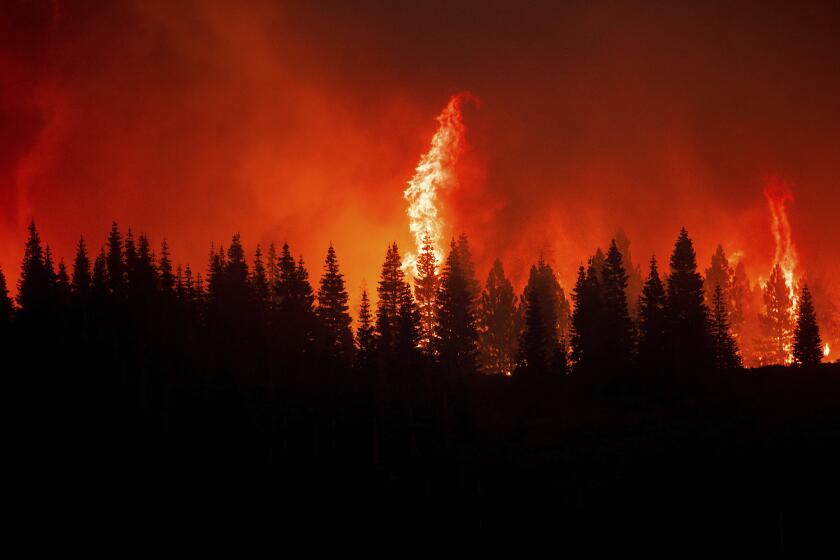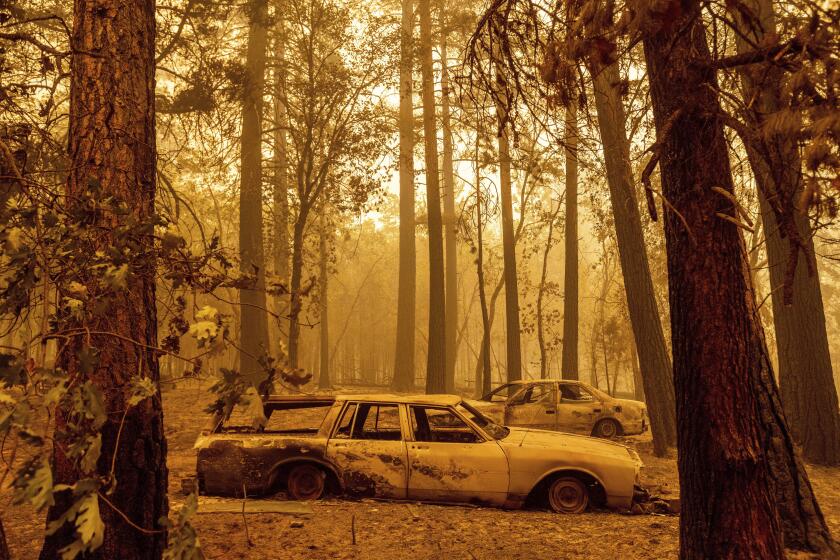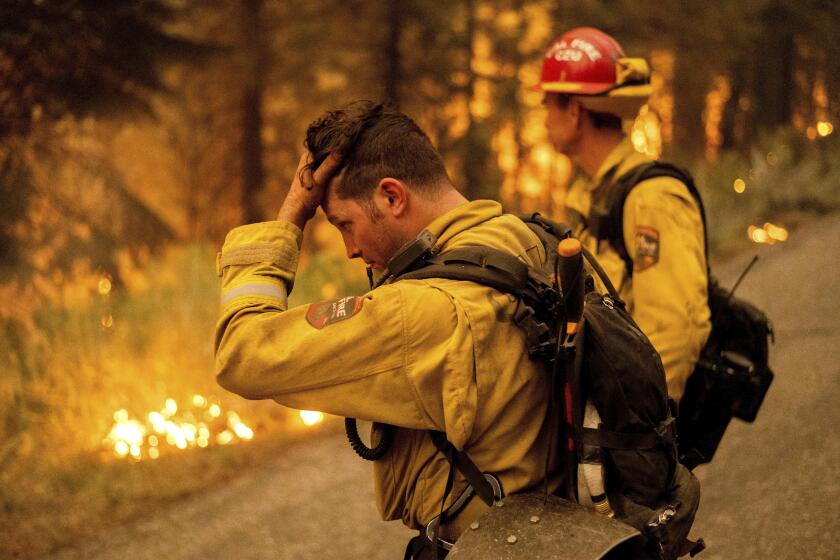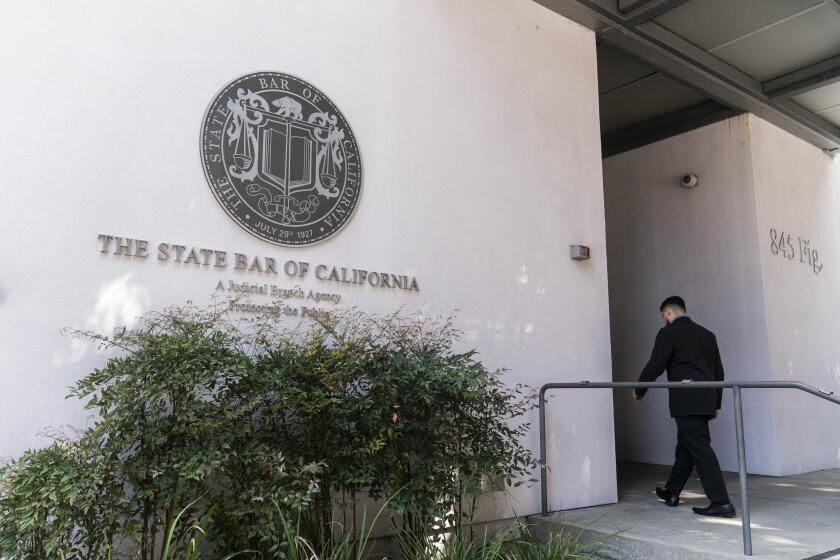As Dixie fire doubles in size, monsoon weather brings new threats
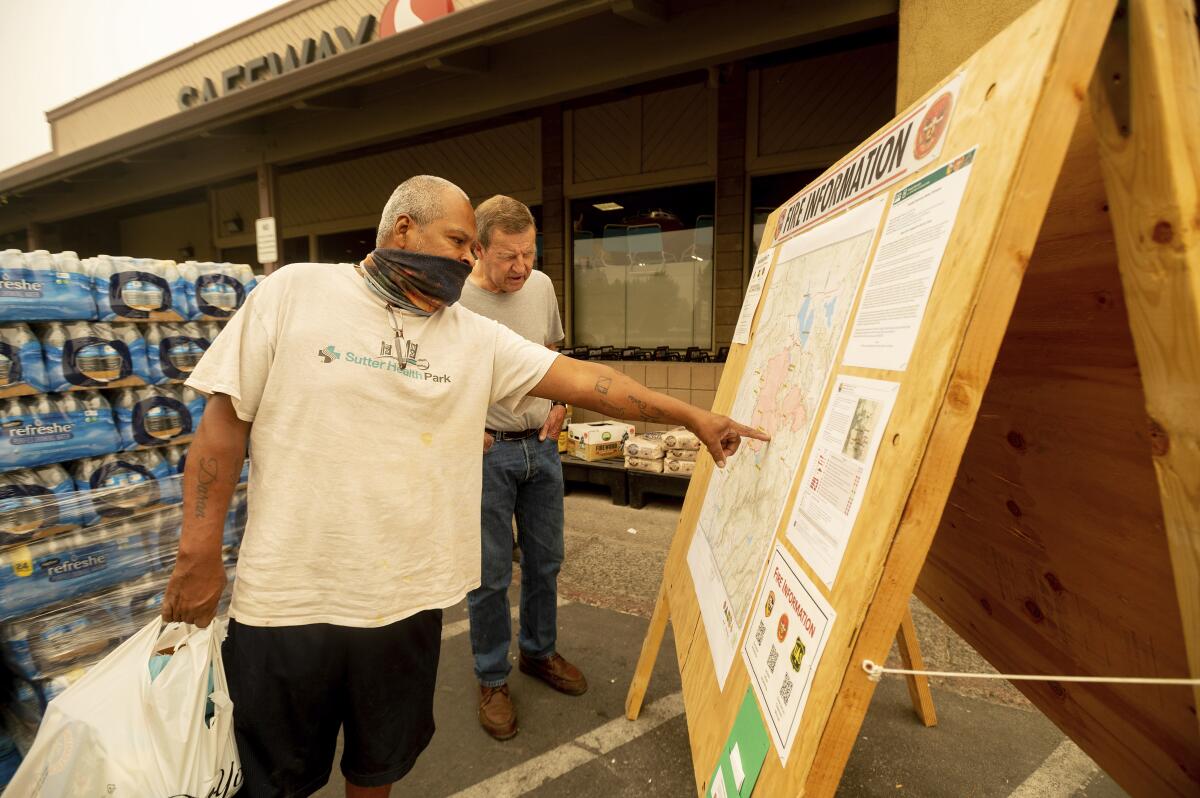
- Share via
It took just days for the Dixie fire to double in size to nearly 200,000 acres, and officials say it could keep getting worse.
Changing weather patterns across the state — including a storm system that brought an unusual spate of rain to Southern California on Monday — are creating new conditions for crews to contend with as the fire keeps burning through Butte and Plumas counties.
The instability of the weather will fuel the fire’s growth, some fear.
“Sometimes [it’s] quite intense,” said Capt. Tony McHale of the fire’s incident management team, noting that isolated thunderstorms add “an element of unpredictability” to firefighting efforts because of the erratic winds they might bring. “And of course, that presents certain challenges and hazards for people that are on the line.”
Already this year, there have been more than twice as many acres burned than during the same period last year — and hundreds more fires.
The monsoonal weather that’s building in the region also brings the potential for lightning, which can ignite new fires, officials said. And conditions are ripe for new pyrocumulonimbus clouds to form above the blaze; these can generate their own weather systems that send crews scrambling.
The Dixie fire, now the 15th largest in California’s recorded history, has damaged at least 16 structures and sent thousands of residents fleeing their homes. For beleaguered crews who are nearly two weeks into the fight, the unwelcome addition of monsoonal weather is making their job harder.
McHale said more than 5,400 personnel are working around the clock, laying containment lines and adding contingency lines as a backup.
“When the weather changes on us,” he said, “we hope those lines can hold.”
Gusty winds and thunderstorms could exacerbate the conditions that are fueling the Dixie and Tamarack fires in Northern California.
Southern Californians got a taste of the weather heading toward the fire zone when they awakened Monday morning to damp lawns and gray skies. Downtown Los Angeles saw 0.09 inches of rain before 5 a.m.; the meager moisture was enough to make this the third-wettest July on record, the agency said.
The same moisture system driving the Southland’s unseasonable rain is making its way north, according to Robert Baruffaldi, a meteorologist with the National Weather Service in Sacramento.
“It’s the exact same thing,” he said of the system. “It’s actually flowing through Southern California, off the coast, and then turning northward.”
Julia Ruthford, a meteorologist with the Dixie fire’s incident management team, said the monsoons will probably land east of the fire but noted that crews are concerned about the winds that may come with them. Strong winds could clear out smoke that is actually keeping the parched terrain from getting baked in the sun.
The wind can also enable the formation of pyrocumulonimbus clouds — which have in recent weeks demonstrated their ability to generate lightning and wind gusts of at least 40 mph — and threaten to stir up embers that could ignite new fires.
Last week, a wind-whipped ember sparked a spot fire that grew so large it earned its own name: the Fly fire. Over the weekend, the 4,300-acre Fly fire merged with the Dixie fire, creating one mushrooming blaze.
In an update Sunday, the U.S. Forest Service said Dixie crews should be prepared for “extreme fire behavior.”
“Atmospheric conditions are less stable, and therefore large pyrocumulus clouds are expected to develop over the fire, increasing the potential for spot fires and rapid fire growth,” the agency said.
The conditions that paved the way for the Dixie fire’s growth are becoming more common.
The unpredictability of the weather means firefighters must stay vigilant, said McHale. Besides taking guidance from the morning forecast, crews frequently take their own weather readings in the field, he said.
Because monsoons don’t typically reach the part of the Sierra Nevada where the Dixie fire is burning, crews aren’t concerned with precipitation so much as with dry lightning and “turbulent winds that will be moving the fire in different directions, unpredictably,” said Chad Hanson, a fire ecologist and director of the John Muir Project.
If a bit of rainfall does arrive at the Dixie fire, he added, it likely won’t be enough to quench the flames.
“The conditions that will basically make the fire slow and stop — which are the same conditions that always make fires slow and stop — is when the temperature goes down, the relative humidity goes up, and the winds die down,” he said — essentially, when you “don’t have fire weather anymore.”
The forecast calls for warming temperatures in the area over the next several days, along with the potential for wind and storms. The thousands of residents who have been forced from their homes will have little choice but to wait.
“It’s a fire that’s [nearly] 200,000 acres, and we’re more than a week in,” said Mike Minton, the Dixie fire’s east zone incident commander. “It will be a while longer until we can get some stability to some of these communities.”
The Dixie fire in Butte County merged with another, smaller fire overnight, swelling to more than 190,000 acres as it burned through neighborhoods.
Scientists have said wildfires across the West are being fueled by the climate crisis, including record-breaking heat waves and worsening drought. Though it’s the largest in California so far this year, Dixie is only one of 85 large fires burning across 13 states, according to the National Interagency Fire Center.
Those hoping the monsoonal moisture would mean an end to the drought — which has shriveled the region’s reservoirs to record lows — are out of luck.
“Any area that receives more than a quarter of an inch will receive maybe 12 to 24 hours of enhanced moisture before things dry out again,” said David Sweet, a meteorologist with the National Weather Service in Oxnard, noting that some hillside vegetation is so dormant that it won’t absorb the rainfall. “Let me just say this will do almost nothing for the drought,” he added.
Those who study climate, weather and wildfire say all signs are likely that Dixie will continue to grow.
“It’s now the 15th largest fire in California history, and it’s just July,” said Chief Nick Truax, the fire’s west zone incident commander. “You keep hearing it, and you keep hearing it, but the situation is serious out there.”
More to Read
Sign up for Essential California
The most important California stories and recommendations in your inbox every morning.
You may occasionally receive promotional content from the Los Angeles Times.
